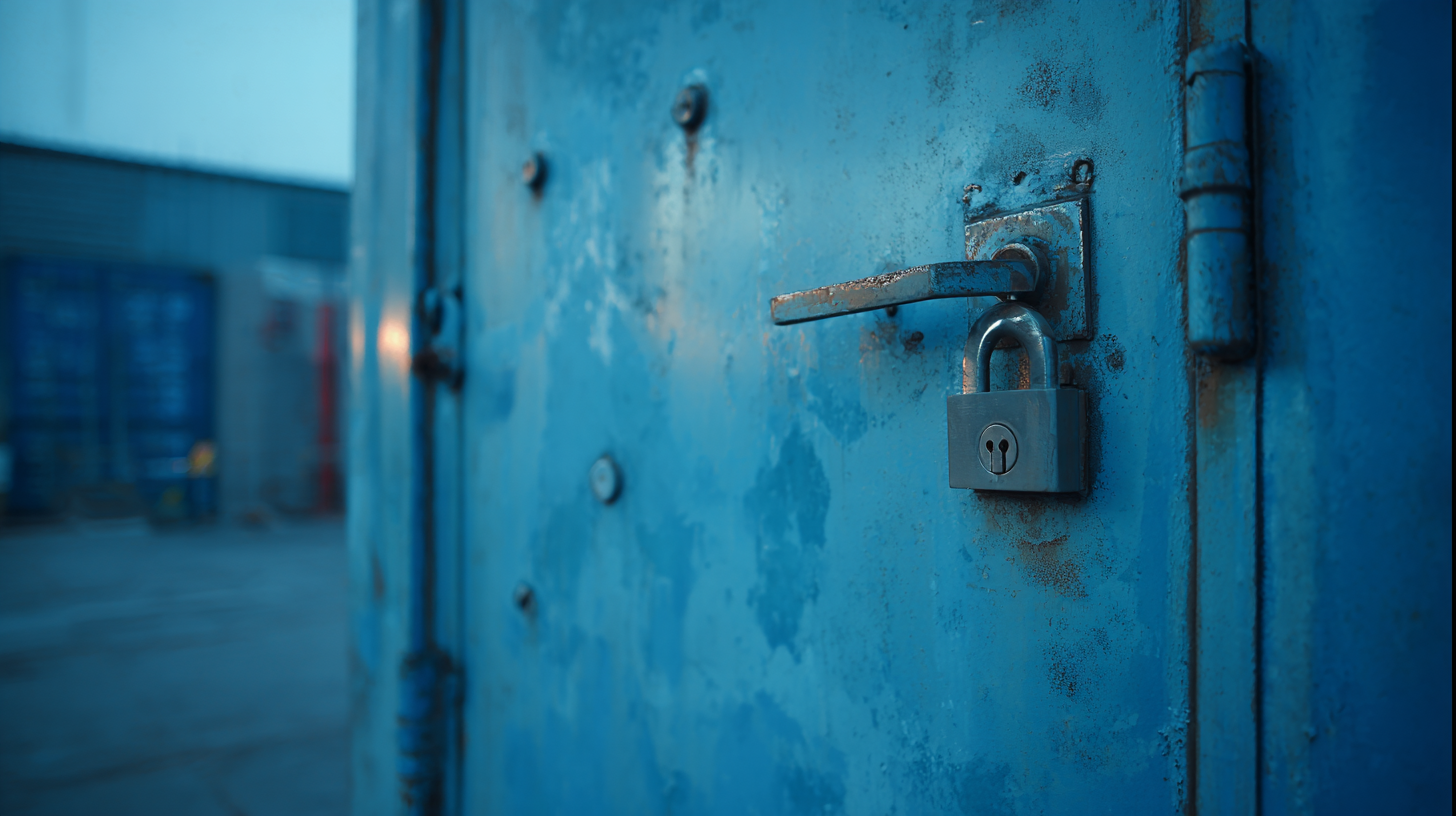- Call Us 03 8353 2113
- Mail Us sale@laxmidoor.com
Blog
How to Achieve Import Export Certification for Best Security Doors For Business
In an increasingly competitive global market, the importance of import and export certification for Security Doors For Business cannot be overstated. According to the Global Market Insights report, the security door market is projected to reach USD 10 billion by 2025, driven by rising concerns over safety and security across various sectors. As businesses prioritize protecting their assets, understanding the certification process becomes vital. This blog will explore the latest industry trends projected for 2025, such as technological advancements and regulatory changes, while also providing a comprehensive guide on how to obtain import-export certification for high-quality security doors. By aligning with these emerging trends and ensuring compliance, businesses can enhance their operational security and gain a competitive edge in the market.

Exploring 2025 Industry Trends for Import Export Certification in Security Doors
The landscape of import-export certification for security doors is evolving, particularly as we approach 2025. Industry trends indicate a stronger emphasis on sustainability and eco-friendly materials, pushing manufacturers to innovate in their designs while ensuring compliance with international standards. As businesses look to tap into global markets, understanding the environmental impact of products will become crucial. Certifications that highlight sustainable practices not only enhance credibility but can also attract a growing demographic of eco-conscious consumers.

In addition to sustainability, technological advancements in security doors are set to redefine certification processes. Integration of smart technology — such as biometric locks and remote monitoring systems — will require updated compliance frameworks. As security concerns escalate worldwide, certification bodies will need to establish new criteria to evaluate these high-tech solutions. Companies that proactively adapt to these trends will not only meet regulatory requirements but also position themselves as leaders in the security door market, ultimately gaining a competitive edge in the fast-changing import-export landscape.
Essential Steps for Obtaining Import Export Certification for Security Doors
When it comes to the import-export of security doors, obtaining the right certification is crucial for businesses aiming to operate in international markets. Essential steps begin with understanding the specific standards required for certification, which vary by country. According to the International Organization for Standardization (ISO), approximately 75% of global trade involves products that are subject to international standards. For security doors, adherence to standards such as ISO 9001 and ISO 14001 can enhance product credibility and open new avenues in global commerce.
Once you have identified the relevant standards, the next step is to compile the necessary documentation. This often includes technical specifications, safety assessments, and proof of compliance with local regulations. A report from the Global Trade Network indicates that efficient documentation processes can reduce export delays by up to 30%. Furthermore, businesses should engage with certified testing laboratories to ensure their products meet stringent performance criteria before submitting them for certification. This proactive approach not only accelerates the certification process but also assures potential clients of the product's quality and reliability, ultimately bolstering market confidence.
Checklist for Ensuring Compliance with Import Export Standards for Security Doors
When pursuing import-export certification for security doors, ensuring compliance with industry standards is crucial. A comprehensive checklist can help businesses align with the necessary import-export regulations. For example, recent reports indicate that by adopting AI-powered solutions, organizations have achieved a 40%-60% reduction in governance, compliance, and quality costs. This statistic underscores the potential benefits of integrating advanced technologies in the certification process, providing clearer insights into compliance requirements.
Furthermore, it's essential to evaluate compliance against both local and international labeling standards. A study in Dar Es Salaam highlighted that many pre-packaged snacks failed to meet these essential guidelines, which can similarly apply to the hardware industry. Manufacturers of security doors must scrutinize their product labels to ensure they are not misleading and comply with all federal regulations. Regular audits, akin to those seen in the medical device sector, can aid in maintaining adherence to Good Manufacturing Practices (GMP), thereby fortifying the overall import-export certification process. By rigorously following these standards, businesses can secure their place in a competitive market and facilitate smoother trade operations.
Import Export Compliance for Security Doors
This chart illustrates the compliance rates of different security door specifications according to import/export standards over the last year.
Innovative Technologies Shaping the Future of Security Door Manufacturing
 Innovative technologies are revolutionizing the security door manufacturing industry, making it essential for businesses to stay informed about the latest advancements. With the rise of smart technologies, modern security doors are now integrated with features that enhance safety and convenience. For instance, biometric fingerprint readers and advanced locking mechanisms provide users with peace of mind, while also enabling seamless access control. These innovations not only improve security but also allow for a more user-friendly experience, catering to the needs of modern businesses.
Innovative technologies are revolutionizing the security door manufacturing industry, making it essential for businesses to stay informed about the latest advancements. With the rise of smart technologies, modern security doors are now integrated with features that enhance safety and convenience. For instance, biometric fingerprint readers and advanced locking mechanisms provide users with peace of mind, while also enabling seamless access control. These innovations not only improve security but also allow for a more user-friendly experience, catering to the needs of modern businesses.
Additionally, the incorporation of sustainable materials and energy-efficient designs is becoming increasingly important in the manufacturing process. Manufacturers are focusing on eco-friendly practices, which not only meet regulatory standards but also appeal to environmentally conscious consumers. This shift not only enhances the durability and safety of security doors but also contributes to a greener planet. As technology continues to advance, the introduction of artificial intelligence and machine learning into security systems will further enhance threat detection and response capabilities, setting new industry standards for safety and innovation.
Best Practices for Selecting Quality Security Doors for Business Needs
When selecting quality security doors for your business, it's essential to prioritize factors that enhance both safety and functionality. First and foremost, consider the material of the doors.
Steel and reinforced aluminum are commonly regarded as top choices due to their durability and resistance to forced entry. Additionally, look for doors with high-grade locks and security features, such as deadbolts and electronic access control systems, which can significantly increase security levels.
Another best practice is to assess the specific needs of your business environment. For instance, if your company deals with sensitive information or valuable assets, opting for doors that offer fire resistance and soundproofing could provide added protection and peace of mind. Furthermore, ensure that the doors comply with relevant safety and certification standards; this not only guarantees quality but also aids in achieving import-export certification, which is beneficial if you plan to source doors internationally. Finally, consult with security professionals to evaluate your premises and identify areas where enhanced security measures, including quality doors, can make a crucial difference.
